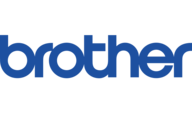Brother VX3240 Manual
Læs nedenfor 📖 manual på dansk for Brother VX3240 (96 sider) i kategorien Symaskine. Denne guide var nyttig for 15 personer og blev bedømt med 4.5 stjerner i gennemsnit af 2 brugere
Side 1/96

ENGLISH
Operation Manual
Sewing Machine
APPENDIX
UTILITY STITCHES
SEWING BASICS
KNOWING YOUR
SEWING MACHINE
Product Code: 885-405/407
Be sure to read this document before using the machine.
We recommend that you keep this document nearby for future reference.
Produkt Specifikationer
| Mærke: | Brother |
| Kategori: | Symaskine |
| Model: | VX3240 |
Har du brug for hjælp?
Hvis du har brug for hjælp til Brother VX3240 stil et spørgsmål nedenfor, og andre brugere vil svare dig
Symaskine Brother Manualer

13 Januar 2025

13 Januar 2025

12 Januar 2025

11 Januar 2025

29 December 2024

29 December 2024

13 December 2024

13 December 2024

13 December 2024

13 December 2024
Symaskine Manualer
- Symaskine Sinbo
- Symaskine Ikea
- Symaskine SilverCrest
- Symaskine Toyota
- Symaskine EasyMaxx
- Symaskine Elna
- Symaskine Singer
- Symaskine Juki
- Symaskine Siemens
- Symaskine Husqvarna
- Symaskine AEG
- Symaskine Hugin
- Symaskine Pfaff
- Symaskine Livoo
- Symaskine Emerio
- Symaskine TriStar
- Symaskine TecLime
- Symaskine Blaupunkt
- Symaskine Privileg
- Symaskine Medion
- Symaskine Kohler
- Symaskine Lifetec
- Symaskine Micromaxx
- Symaskine Lervia
- Symaskine Anker-Bernette
- Symaskine RCE
- Symaskine Mellerware
- Symaskine Bernette
- Symaskine Husqvarna-Viking
- Symaskine Bernina
- Symaskine Baby Lock
- Symaskine Ambiano
- Symaskine Dürkopp Adler
- Symaskine Huskystar
- Symaskine Hema
- Symaskine Janome
- Symaskine Prixton
- Symaskine Termozeta
- Symaskine Easy Home
- Symaskine Alfa
- Symaskine Cecotec
- Symaskine Silver
- Symaskine Solac
- Symaskine Primera
- Symaskine Crofton
- Symaskine Jocca
- Symaskine Kenmore
- Symaskine Bestron
- Symaskine Kunft
- Symaskine Union Special
- Symaskine LERAN
- Symaskine Veritas
- Symaskine Yamato
- Symaskine Mistral
- Symaskine Aigger
- Symaskine Jata
- Symaskine Guzzanti
- Symaskine Necchi
- Symaskine Kayser
- Symaskine Carina
- Symaskine Vendomatic
- Symaskine Home Electric
- Symaskine Wëasy
- Symaskine Empisal
- Symaskine Lewenstein
- Symaskine Victoria
- Symaskine Durabase
- Symaskine Meister Craft
- Symaskine Yamata
- Symaskine Łucznik
- Symaskine Prince
- Symaskine Hofmann
- Symaskine Muller
- Symaskine Sinojo
- Symaskine Gritzner
- Symaskine W6
- Symaskine Zippy
- Symaskine Feiyue
- Symaskine Mediashop
- Symaskine ER
- Symaskine Novamatic
- Symaskine Siemssen
- Symaskine Mio Star
- Symaskine SteamMax
Nyeste Symaskine Manualer

4 Marts 2025

4 Marts 2025

4 Marts 2025

4 Marts 2025

4 Marts 2025

4 Marts 2025

12 Februar 2025

6 Februar 2025

6 Februar 2025

5 Februar 2025